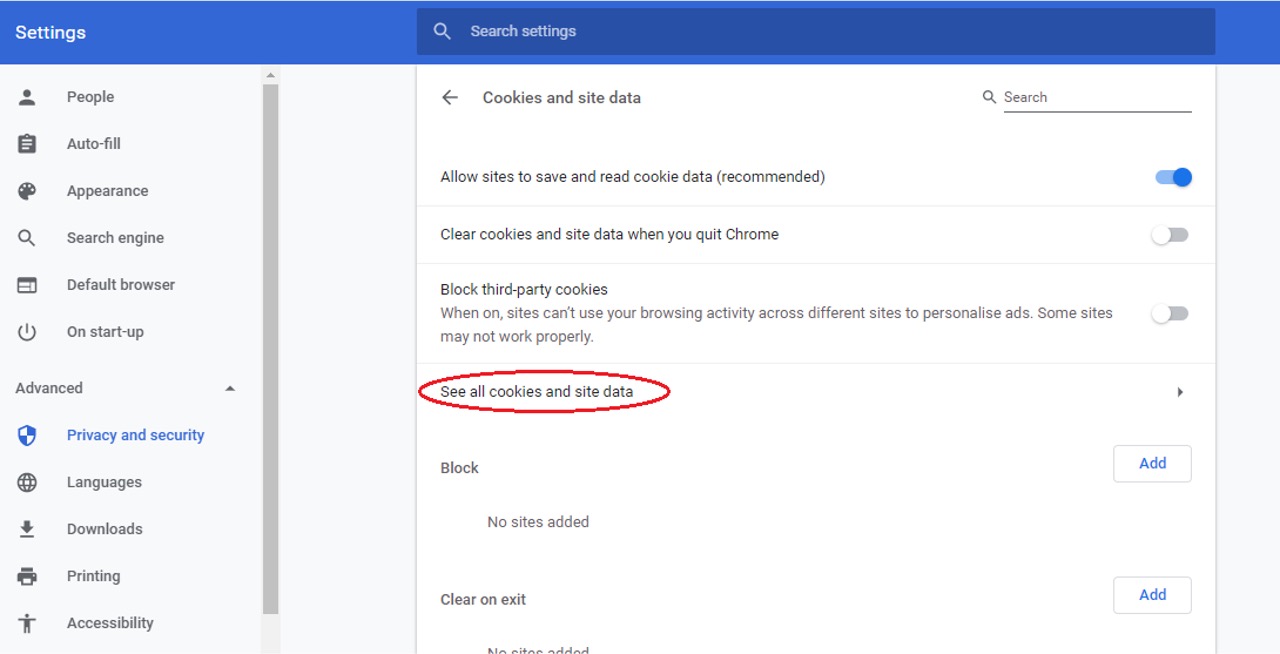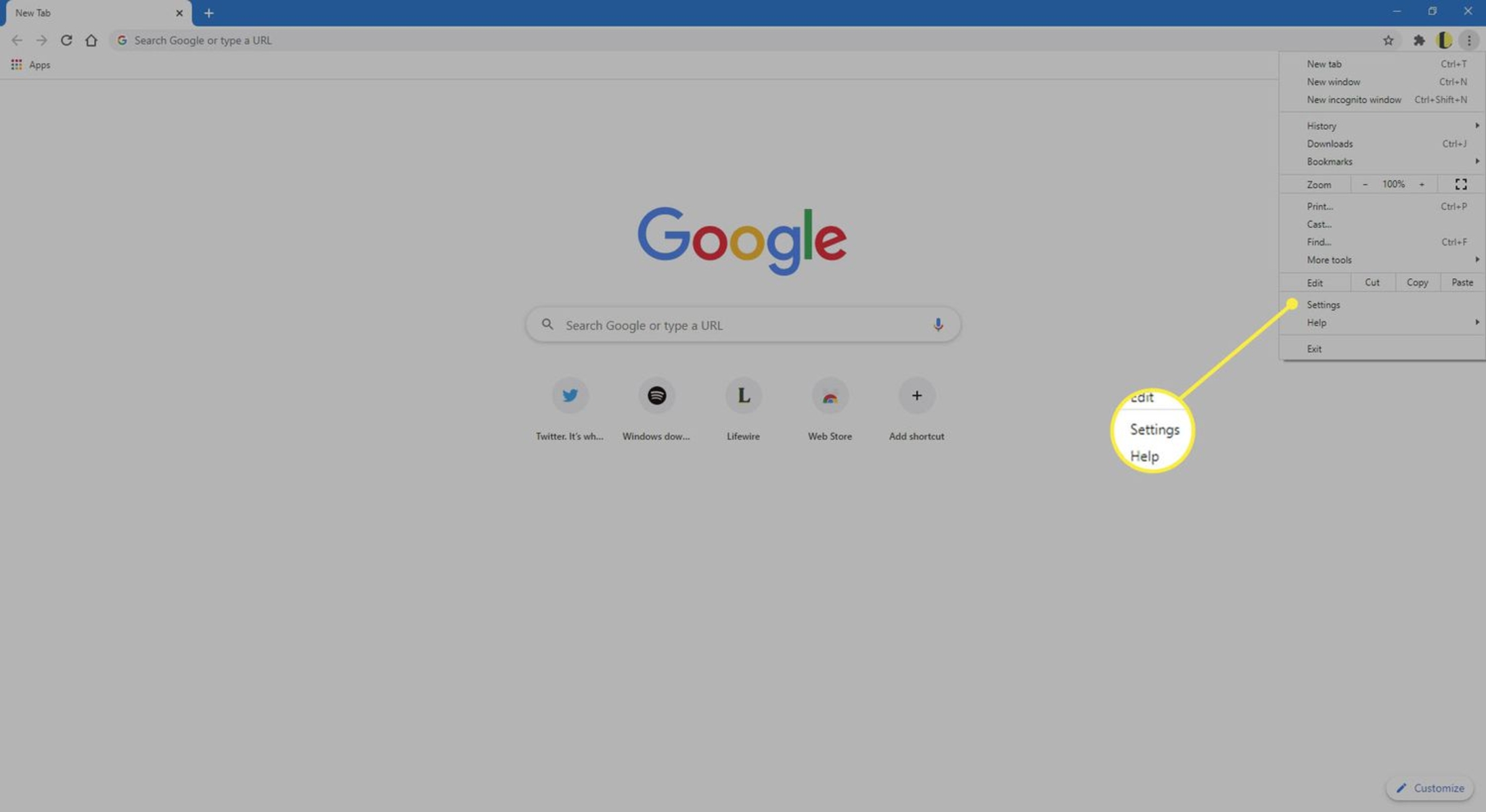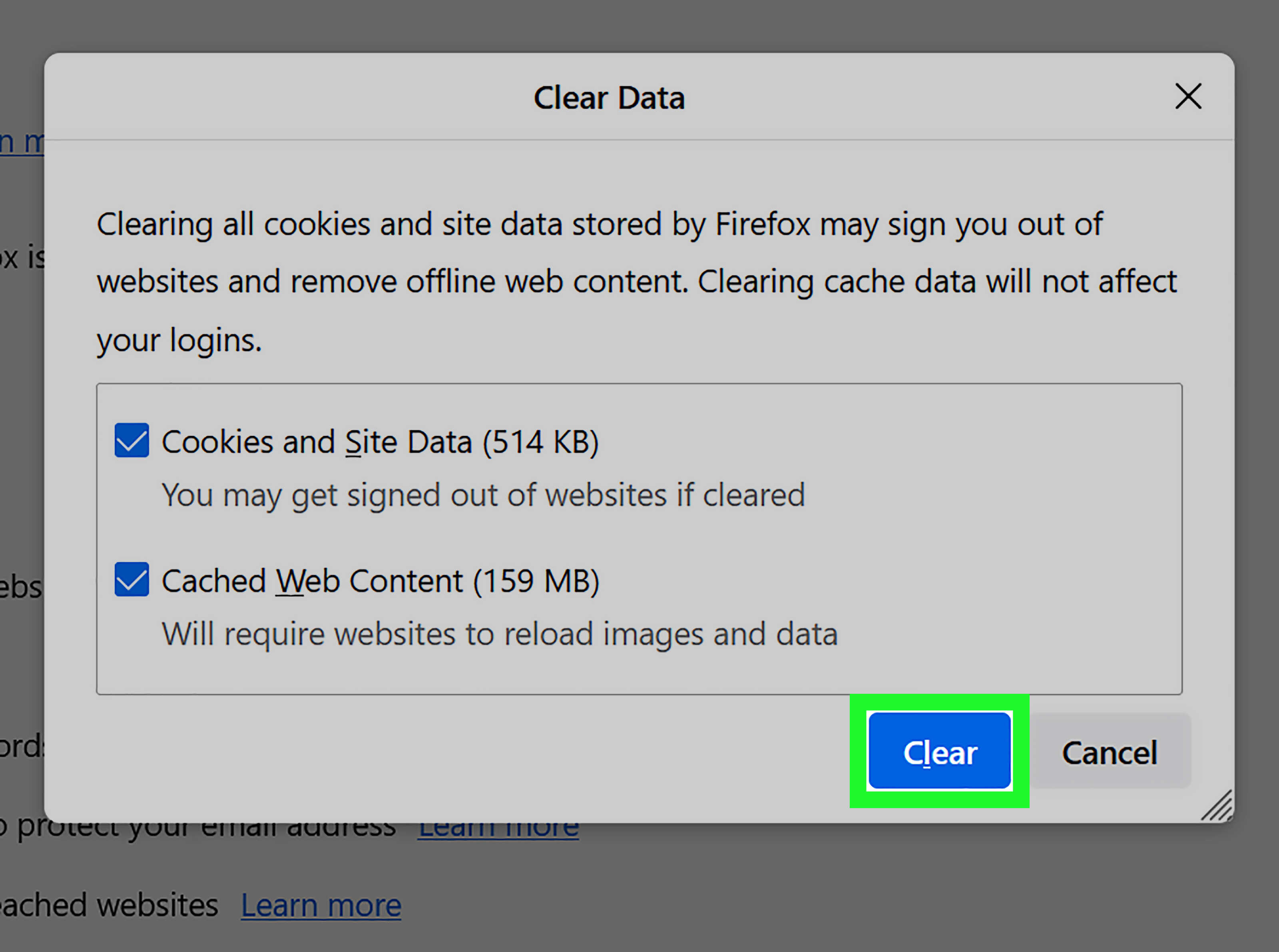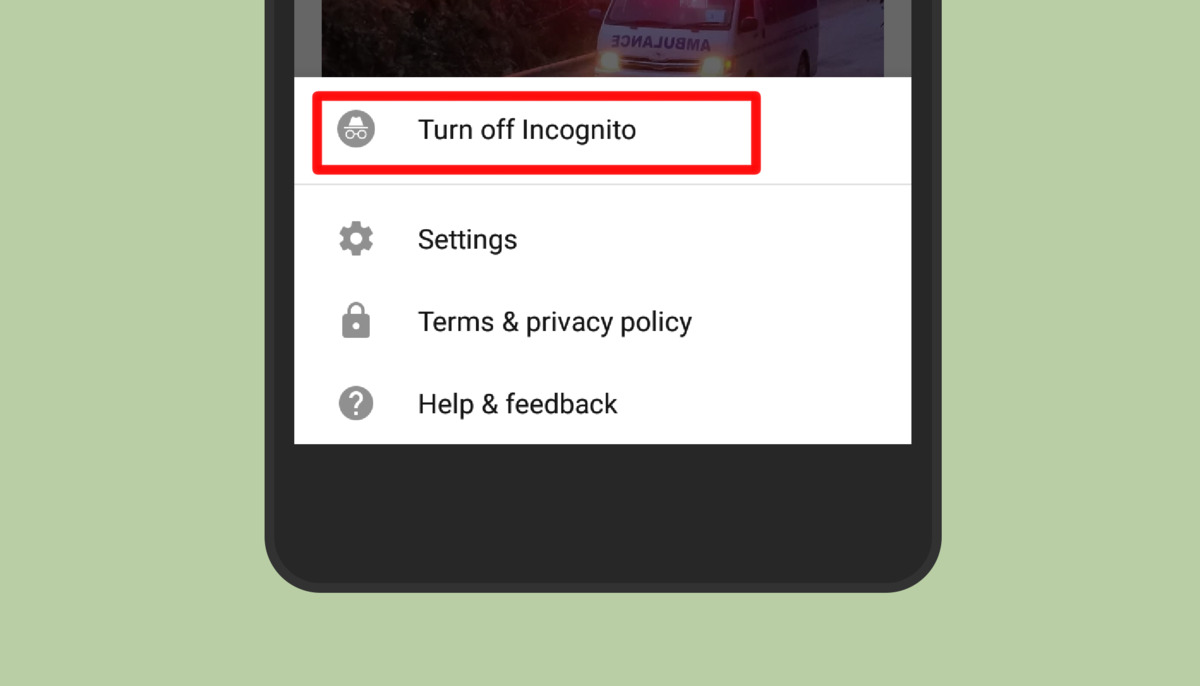Introduction
In the vast and ever-evolving digital landscape, web browsers serve as the gateway to the boundless realm of the internet. Among the multitude of features and settings that shape the browsing experience, the handling of cookies holds significant importance. Cookies, small pieces of data stored on a user's device, play a pivotal role in personalizing web content, streamlining user authentication, and tracking browsing behavior.
In this article, we delve into the realm of third-party cookies and explore the process of enabling them on the widely used Chrome browser. Understanding the nuances of third-party cookies and their impact on browsing privacy and functionality is crucial for harnessing the full potential of the web.
As we embark on this journey, we will unravel the intricacies of third-party cookies, shed light on the reasons for enabling them on Chrome, and provide a comprehensive guide to empower users to take control of their browsing experience. Let's embark on this enlightening exploration of third-party cookies and their integration with the Chrome browser.
Understanding Third-Party Cookies
In the realm of web browsing, cookies are fundamental elements that facilitate a personalized and seamless online experience. These small pieces of data, stored on a user's device by websites, serve various purposes, including remembering login credentials, tracking user preferences, and enabling targeted advertising. While first-party cookies are set by the website being visited, third-party cookies are set by domains other than the one being accessed directly. This distinction is crucial in understanding the role and implications of third-party cookies in the browsing ecosystem.
Third-party cookies are primarily utilized by external entities, such as advertisers and analytics providers, to track user activity across multiple websites. This cross-site tracking enables these entities to gather comprehensive insights into user behavior, preferences, and interactions with online content. By leveraging third-party cookies, these entities can deliver targeted advertisements, measure the effectiveness of marketing campaigns, and personalize the content presented to users based on their browsing history.
However, the utilization of third-party cookies has sparked debates regarding user privacy and data security. As these cookies enable cross-site tracking, they raise concerns about the potential for invasive tracking practices and the unauthorized collection of sensitive user information. This has prompted heightened awareness and regulatory efforts aimed at safeguarding user privacy in the digital sphere.
In response to these concerns, major web browsers, including Chrome, have implemented measures to enhance user privacy by imposing restrictions on third-party cookies. These measures aim to provide users with greater control over their online privacy while maintaining a balance with the needs of advertisers and content providers.
Understanding the nuances of third-party cookies empowers users to make informed decisions about their browsing preferences and privacy settings. By grasping the role of third-party cookies in cross-site tracking and targeted advertising, users can navigate the digital landscape with heightened awareness and agency.
As we proceed to explore the steps to enable third-party cookies on Chrome, this foundational understanding of third-party cookies will serve as a valuable compass, guiding users through the intricacies of browser settings and privacy preferences. Let's embark on this enlightening journey to unravel the significance of enabling third-party cookies on the Chrome browser.
Why Enable Third-Party Cookies on Chrome
Enabling third-party cookies on Chrome can significantly enhance the browsing experience and unlock a myriad of functionalities that rely on cross-site tracking and personalized content delivery. While the debate surrounding user privacy and data security continues to evolve, there are compelling reasons to consider enabling third-party cookies within the Chrome browser.
Personalized Content and Recommendations
By allowing third-party cookies, users can benefit from personalized content recommendations and targeted advertisements tailored to their interests and browsing behavior. These cookies enable content providers and advertisers to deliver relevant and engaging content, enhancing the overall user experience. Whether it's discovering new products aligned with their preferences or accessing curated content based on their interests, enabling third-party cookies can enrich users' online interactions.
Seamless Authentication and User Experience
Third-party cookies play a crucial role in streamlining user authentication and maintaining session continuity across different websites. Enabling these cookies on Chrome ensures a seamless and efficient login experience, allowing users to navigate between various platforms without repetitive authentication processes. This contributes to a smoother and more convenient browsing experience, reducing friction and enhancing user satisfaction.
Enhanced Website Functionality and Analytics
Many websites rely on third-party cookies to optimize their functionality and gather valuable insights into user behavior. By enabling these cookies, users contribute to the improvement of website performance and the generation of meaningful analytics data. This, in turn, empowers website owners and administrators to refine their platforms, deliver enhanced user experiences, and make data-driven decisions to better serve their audience.
Support for E-commerce and Personalization Features
In the realm of e-commerce, enabling third-party cookies on Chrome is instrumental in supporting personalized product recommendations, shopping cart management, and targeted promotional offers. These cookies enable e-commerce platforms to tailor their offerings based on users' browsing history and preferences, fostering a more engaging and relevant shopping experience. By enabling third-party cookies, users can harness the full potential of personalized e-commerce features and exclusive offers.
Access to Integrated Services and Content Syndication
Enabling third-party cookies facilitates the integration of services and content syndication across diverse platforms. This integration enables seamless access to complementary services, such as social media plugins, content sharing functionalities, and collaborative tools. By allowing third-party cookies, users can leverage these integrated services to enrich their online interactions and streamline their digital workflows.
In essence, enabling third-party cookies on Chrome opens the door to a multitude of benefits, including personalized content delivery, streamlined authentication, enhanced website functionality, and support for e-commerce and integrated services. While considerations for privacy and data protection remain paramount, understanding the value of enabling third-party cookies empowers users to make informed decisions that align with their browsing preferences and objectives.
Steps to Enable Third-Party Cookies on Chrome
Enabling third-party cookies on the Chrome browser involves navigating through the browser settings to customize privacy preferences and allow cross-site tracking for enhanced functionality. Follow these straightforward steps to enable third-party cookies and unlock a broader range of personalized content and seamless browsing experiences:
-
Access Chrome Settings: Begin by opening the Chrome browser on your desktop or mobile device. Click on the three-dot menu icon located in the top-right corner of the browser window to reveal a dropdown menu. From the menu, select "Settings" to access the browser's configuration options.
-
Navigate to Privacy and Security Settings: Within the Settings menu, scroll down and locate the "Privacy and security" section. Click on this section to reveal a range of privacy-related settings that govern the behavior of cookies and site data.
-
Manage Cookies and Site Data: Under the "Privacy and security" section, locate and click on the "Cookies and other site data" option. This will lead you to a screen where you can manage the cookie settings for the Chrome browser.
-
Enable Third-Party Cookies: Within the "Cookies and other site data" settings, you will find the option to manage cookie behavior. Look for the setting related to third-party cookies and decide whether to allow them. By default, Chrome may block third-party cookies for enhanced privacy and security. Toggle the setting to enable third-party cookies based on your preferences.
-
Customize Cookie Settings: Chrome provides the option to customize cookie settings on a per-site basis. You can choose to allow or block third-party cookies for specific websites, providing granular control over your browsing experience. This level of customization empowers users to tailor their cookie preferences according to individual websites and their trustworthiness.
-
Save Changes and Restart Chrome: Once you have adjusted the cookie settings to enable third-party cookies, ensure to save the changes. Click on the appropriate buttons to apply the new settings and exit the configuration menu. It may be necessary to restart the Chrome browser for the changes to take effect.
By following these steps, users can effectively enable third-party cookies on the Chrome browser, unlocking a multitude of functionalities and personalized content delivery while maintaining a degree of control over their privacy preferences. It's important to weigh the benefits of enabling third-party cookies against privacy considerations and make informed decisions that align with individual browsing objectives and preferences.
Conclusion
In conclusion, the intricate interplay between third-party cookies and the browsing experience underscores the dynamic nature of online privacy, personalization, and functionality. As we navigate the digital realm, the decision to enable third-party cookies on the Chrome browser embodies a delicate balance between embracing enhanced features and maintaining control over privacy preferences.
By understanding the role of third-party cookies in cross-site tracking, personalized content delivery, and seamless authentication, users gain valuable insights into the multifaceted impact of these cookies on their browsing experiences. The ability to harness personalized content recommendations, streamline authentication processes, and support e-commerce functionalities underscores the tangible benefits of enabling third-party cookies within the Chrome ecosystem.
However, the considerations for user privacy and data security remain paramount. The ongoing discourse surrounding online privacy and the responsible use of user data necessitates a thoughtful approach to enabling third-party cookies. Users are encouraged to weigh the benefits of enhanced functionality against the potential implications of cross-site tracking and data collection by external entities.
As we embrace the empowerment of enabling third-party cookies, it is essential to leverage the granular control and customization options provided by Chrome to align cookie preferences with individual browsing habits and trust levels for specific websites. This nuanced approach allows users to curate their online experiences while embracing the functionalities that third-party cookies enable.
Ultimately, the decision to enable third-party cookies on Chrome embodies a personalized choice that reflects individual preferences, browsing habits, and privacy considerations. By navigating the browser settings with informed awareness and agency, users can strike a harmonious balance between functionality and privacy, shaping a browsing experience that aligns with their unique needs and objectives.
In the ever-evolving landscape of web browsing, the integration of third-party cookies within the Chrome browser represents a pivotal aspect of the digital journey. By embracing a nuanced understanding of these cookies and their implications, users can navigate the digital realm with heightened awareness, empowered to make informed decisions that resonate with their browsing preferences and values.

























